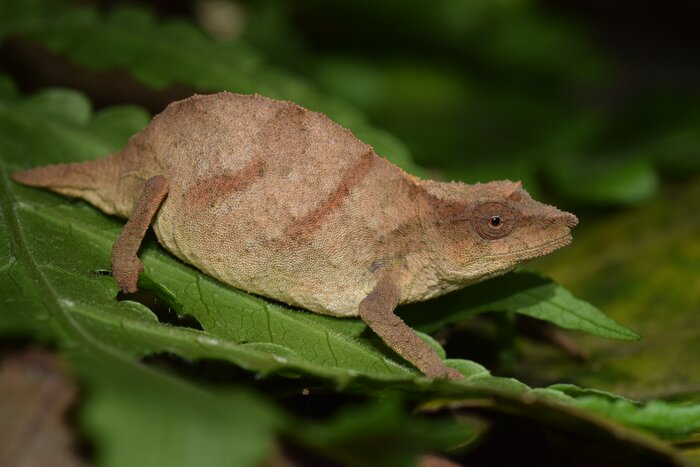The IUCN Red List categorises endangered animals through a series of conservation categories – vulnerable to endangered to critically endangered and lastly – extinct.

The Chapman’s pygmy chameleon was feared missing until researchers rediscovered it in scattered patches of forest in Malawi in 2021. Picture: Krystal Telley/ Getaway Gallery
If a species is categorised as “critically endangered”, it is at risk of extinction. But there’s an often overlooked category that’s simply called “lost“. This is a term scientists use to describe plants, animals and fungi that have not been seen for the past 10 years.
A podcast by Vox – Unexplainable – recently shed light on the category after joining an expedition hunting for a lost species, the eyeless salamander.
This salamander lives in an aquifer, deep below San Antonio, Texas. It has not been seen for 70 years.
In South Africa, De Winton’s golden mole has been lost to science for 85 years, and a research team is scouring the hills around Port Nolloth, hoping to rediscover the species.
As recently as 2021, the Chapman’s pygmy chameleon was rediscovered clinging for its life in tiny patches of forest in Malawi after it was last seen in 1992.
Expeditions like these can contribute to a greater scientific mission of understanding what still exists in earth’s ecosystems and allows researchers to ask the bigger questions such as how animals evolve and why certain environments have greater diversity.
Fortunately, scientists can use modern technology such as motion sensing cameras and DNA sampling to help rediscover animals. Even the public can get involved by uploading their sightings to the app iNaturalist, which is usually confirmed by experts.
ALSO READ: Black rhinos return to Zinave National Park in Mozambique

















